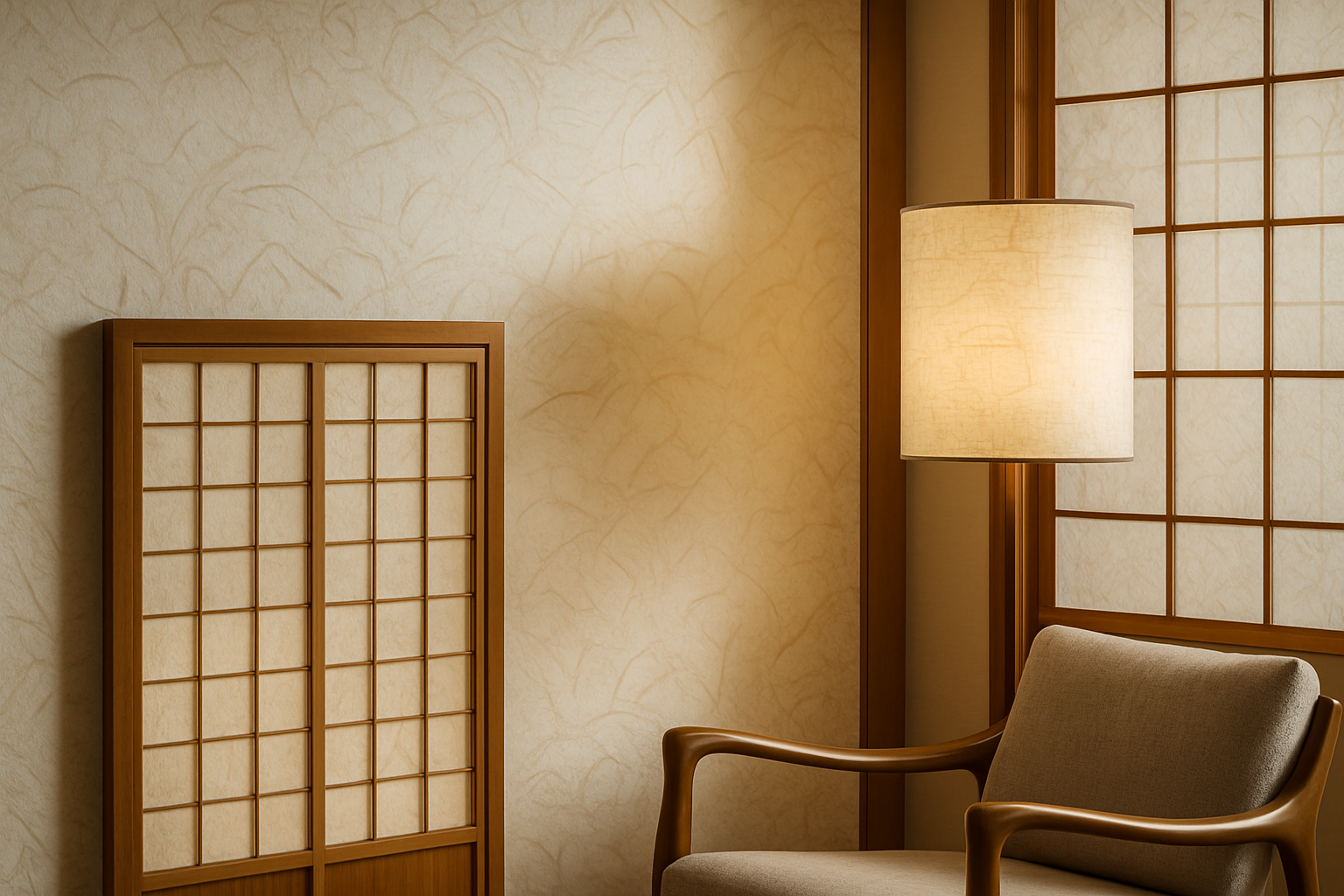Whimsical Washi: Elevating Interiors with Japanese Paper Art
The world of interior design is constantly evolving, seeking fresh perspectives and innovative materials to transform living spaces. Enter washi, the traditional Japanese paper that's making waves in modern home decor. This article delves into the art of incorporating washi into contemporary interiors, exploring its versatility, sustainability, and ability to infuse spaces with ethereal beauty and cultural richness.

The Rich Heritage of Washi
Washi, which translates to “Japanese paper,” boasts a history spanning over 1,400 years. Traditionally made from the inner bark of three plants – kozo, mitsumata, and gampi – washi is renowned for its strength, texture, and translucency. Initially used for calligraphy, painting, and book-binding, washi has evolved beyond its original purposes, finding new life in contemporary design.
The UNESCO-recognized craft of washi-making involves a meticulous process of harvesting, steaming, and hand-beating the plant fibers. This labor-intensive technique results in a product that’s not only beautiful but also incredibly durable, with some washi artifacts lasting over a thousand years.
Washi in Modern Interiors: A New Design Frontier
Today’s interior designers are rediscovering washi, drawn to its unique properties and aesthetic appeal. Its ability to diffuse light while maintaining privacy makes it an ideal material for room dividers and window treatments. Washi’s natural insulating properties also contribute to energy efficiency, aligning with the growing demand for sustainable design solutions.
Designers are experimenting with washi in various applications:
-
Wall coverings: Textured washi wallpapers add depth and warmth to spaces, creating a serene atmosphere reminiscent of traditional Japanese interiors.
-
Lighting fixtures: Washi lampshades create a soft, ambient glow, perfect for creating cozy nooks or statement lighting pieces.
-
Furniture accents: From cabinet fronts to chair upholstery, washi is being integrated into furniture design for a touch of elegance and originality.
The Art of Washi: Techniques and Aesthetics
One of the most captivating aspects of washi is the array of techniques used to create diverse visual effects. Momigami, or crumpled washi, results in a leather-like texture perfect for adding rustic charm to modern spaces. Chiyogami, with its vibrant patterns achieved through woodblock printing, introduces pops of color and intricate designs.
Innovative designers are also combining washi with other materials like metal and wood, creating unique textures and finishes. This fusion of traditional craft with contemporary design sensibilities is opening up new possibilities in interior aesthetics.
Sustainability and Washi: A Natural Fit
As the design world increasingly prioritizes sustainability, washi emerges as an eco-friendly alternative to synthetic materials. Its biodegradable nature and the renewable resources used in its production make it an attractive option for environmentally conscious consumers and designers.
Moreover, the longevity of washi products aligns with the principles of slow design, encouraging a move away from disposable decor towards items that age gracefully and last for generations.
Incorporating Washi: Tips for Homeowners
For those looking to introduce washi into their homes, start small:
-
Experiment with washi tape to add subtle patterns to walls or furniture.
-
Replace conventional lampshades with washi versions for a soft, diffused light.
-
Use washi paper as a unique gift-wrapping option or to create custom wall art.
-
Consider washi screens as room dividers in open-plan spaces for flexibility and style.
As comfort with the material grows, homeowners can explore more significant applications, such as custom-made washi wallcoverings or collaborating with artisans for bespoke furniture pieces.
The Future of Washi in Interior Design
As global interest in Japanese aesthetics continues to grow, washi is poised to become a staple in contemporary interior design. Its versatility, sustainability, and unique visual qualities make it an ideal material for creating spaces that are both beautiful and meaningful.
The future may see further innovations in washi production, including new techniques for enhancing its durability or incorporating technology. Imagine smart homes where washi screens change opacity with a touch or wallpapers that subtly shift patterns throughout the day.
Embracing Washi: A Bridge Between Tradition and Innovation
The resurgence of washi in modern interiors represents more than just a design trend; it’s a celebration of craftsmanship and a bridge between cultural heritage and contemporary living. By incorporating washi into our homes, we not only elevate our spaces aesthetically but also connect with a rich tradition of artistry and sustainability.
As we look to create more mindful, personalized living environments, washi offers a unique opportunity to infuse our spaces with beauty, tranquility, and a touch of Japanese elegance. Whether through bold statement pieces or subtle accents, washi has the power to transform ordinary rooms into extraordinary experiences, inviting us to slow down and appreciate the delicate interplay of light, texture, and craftsmanship in our daily lives.





